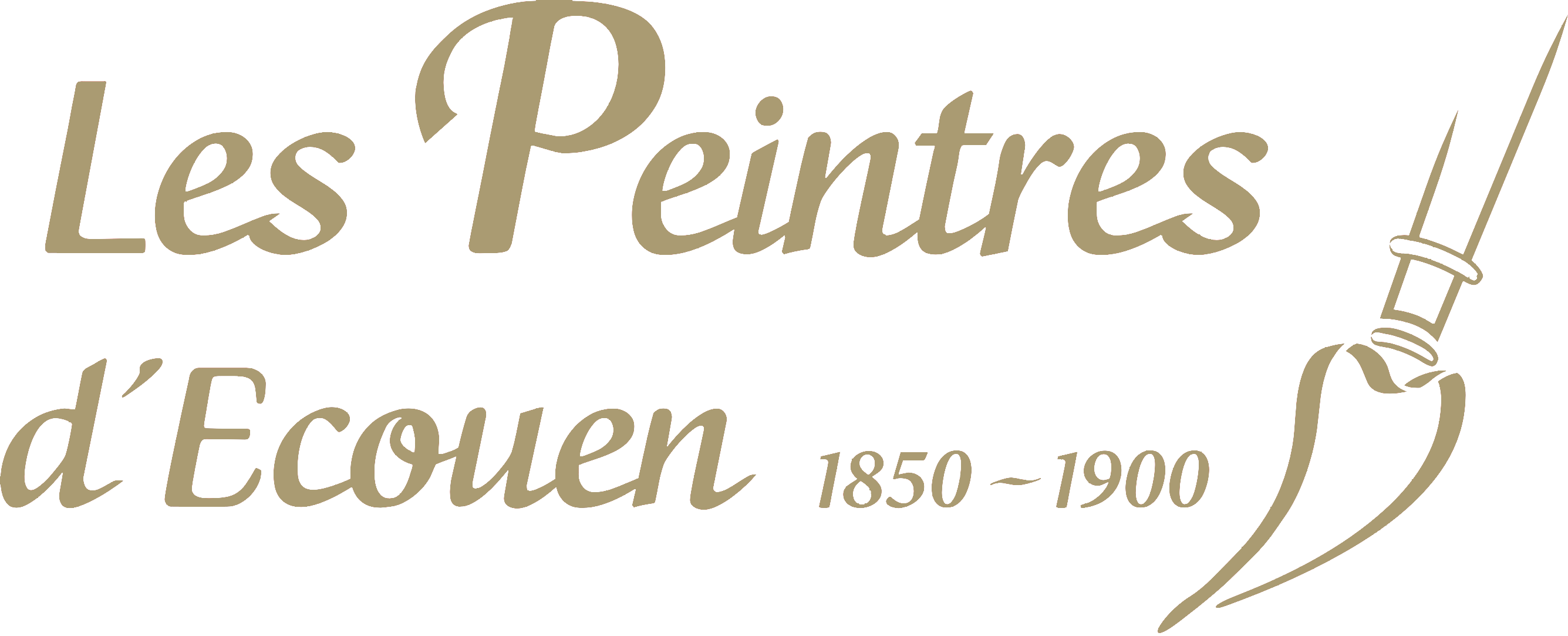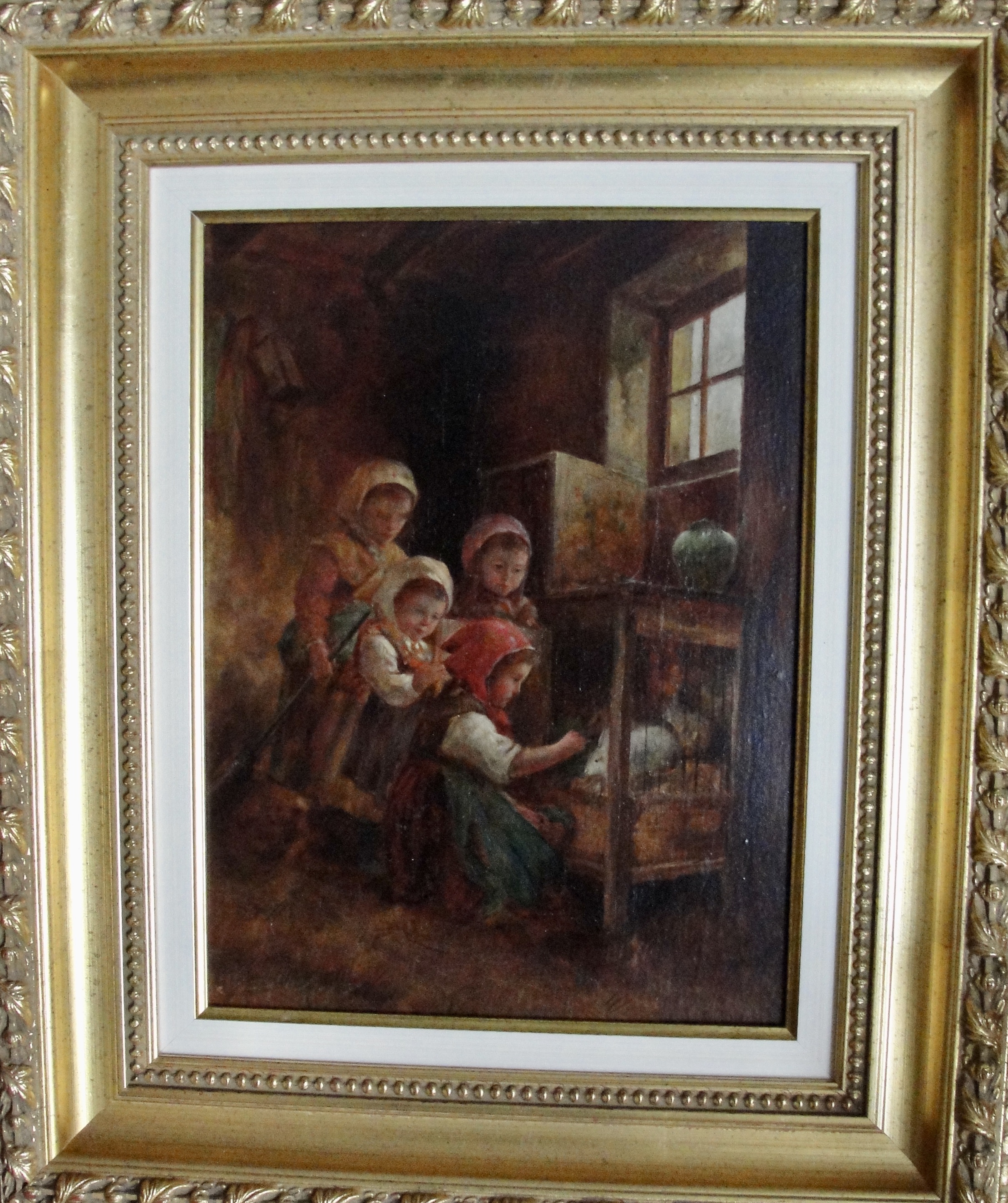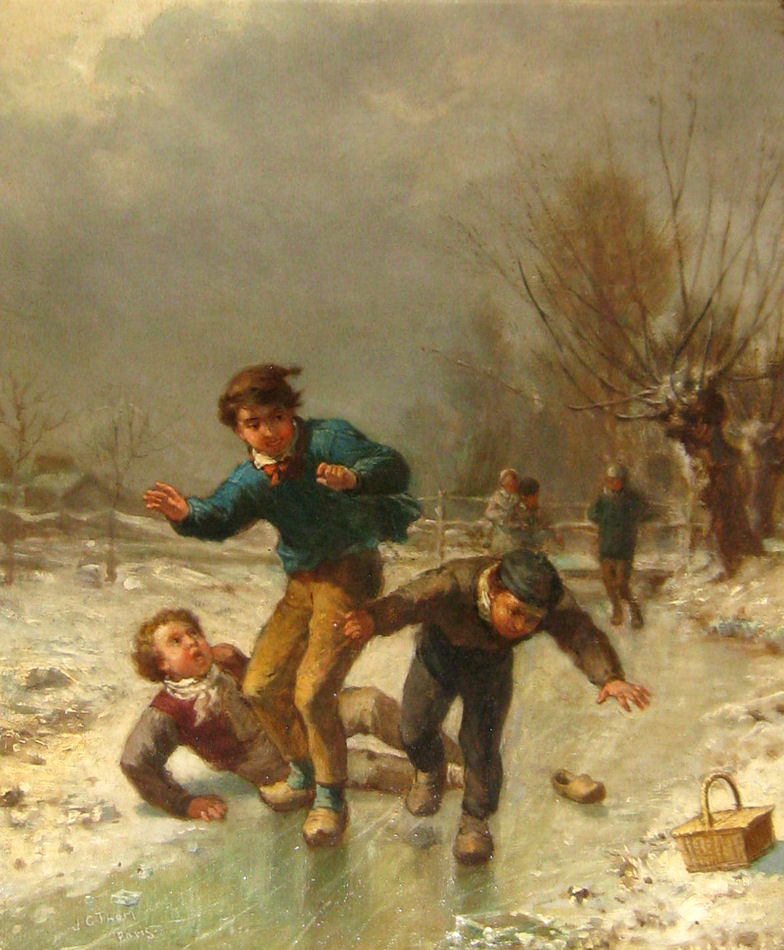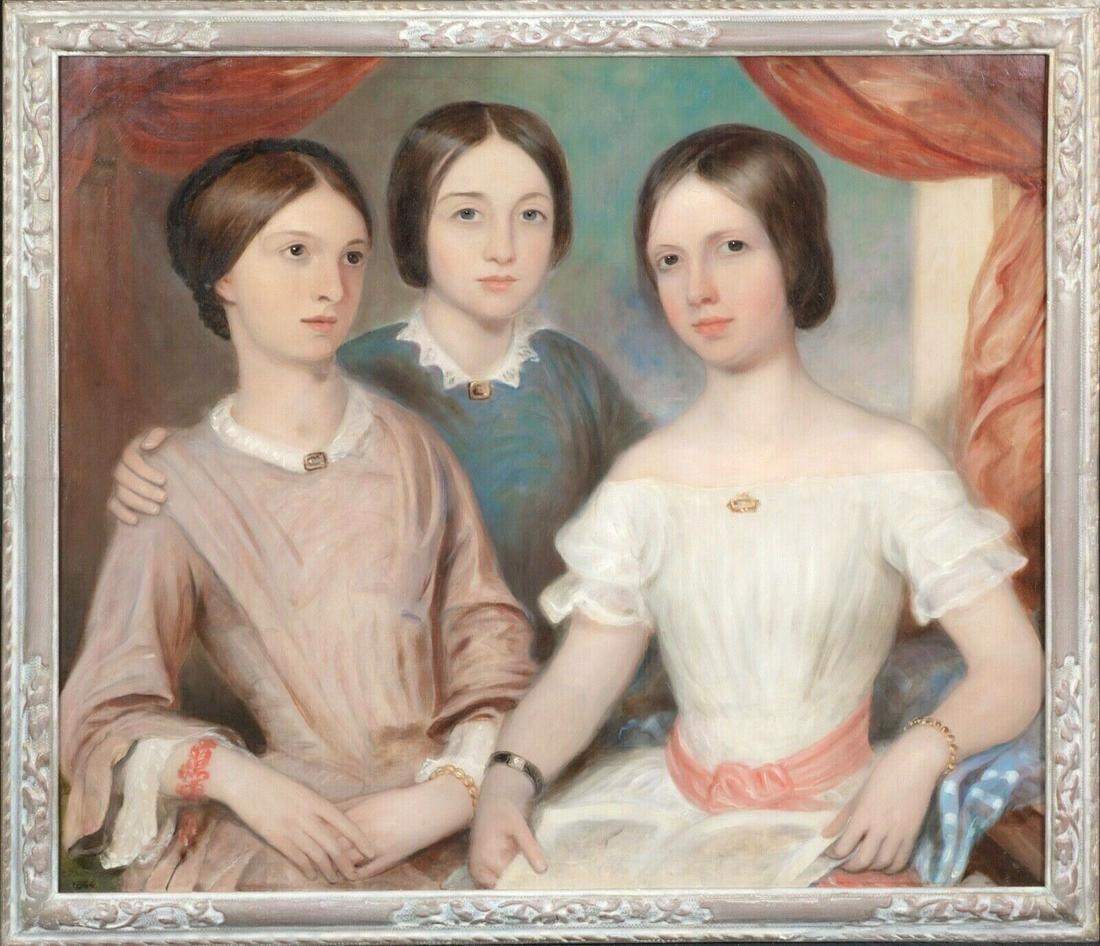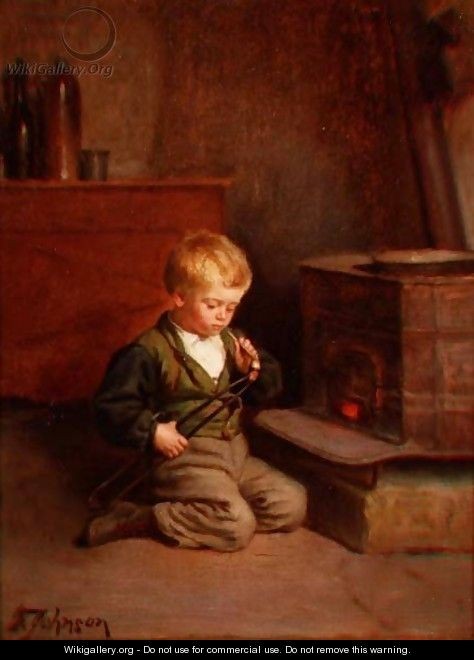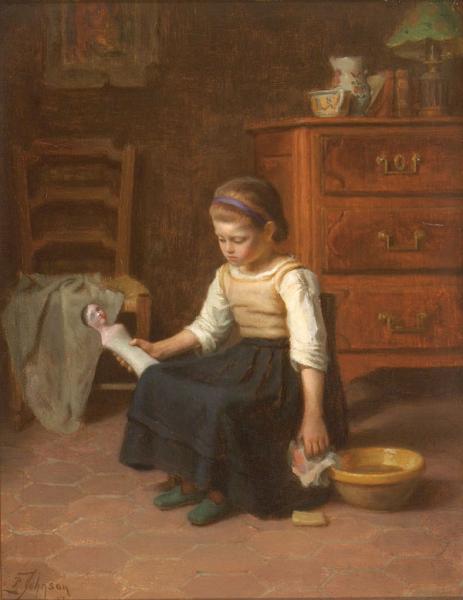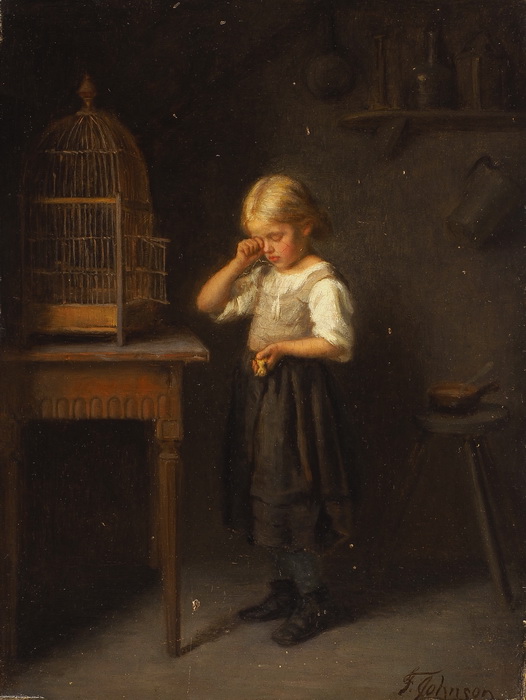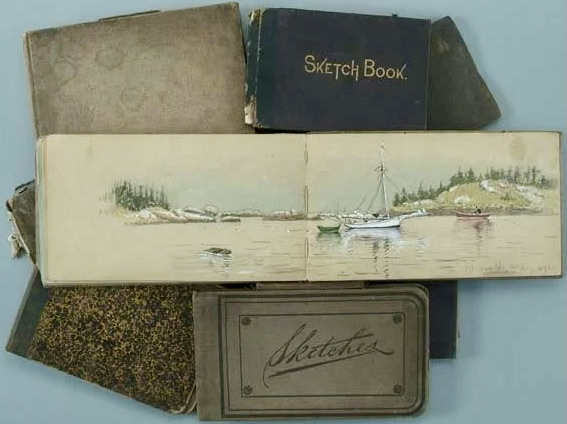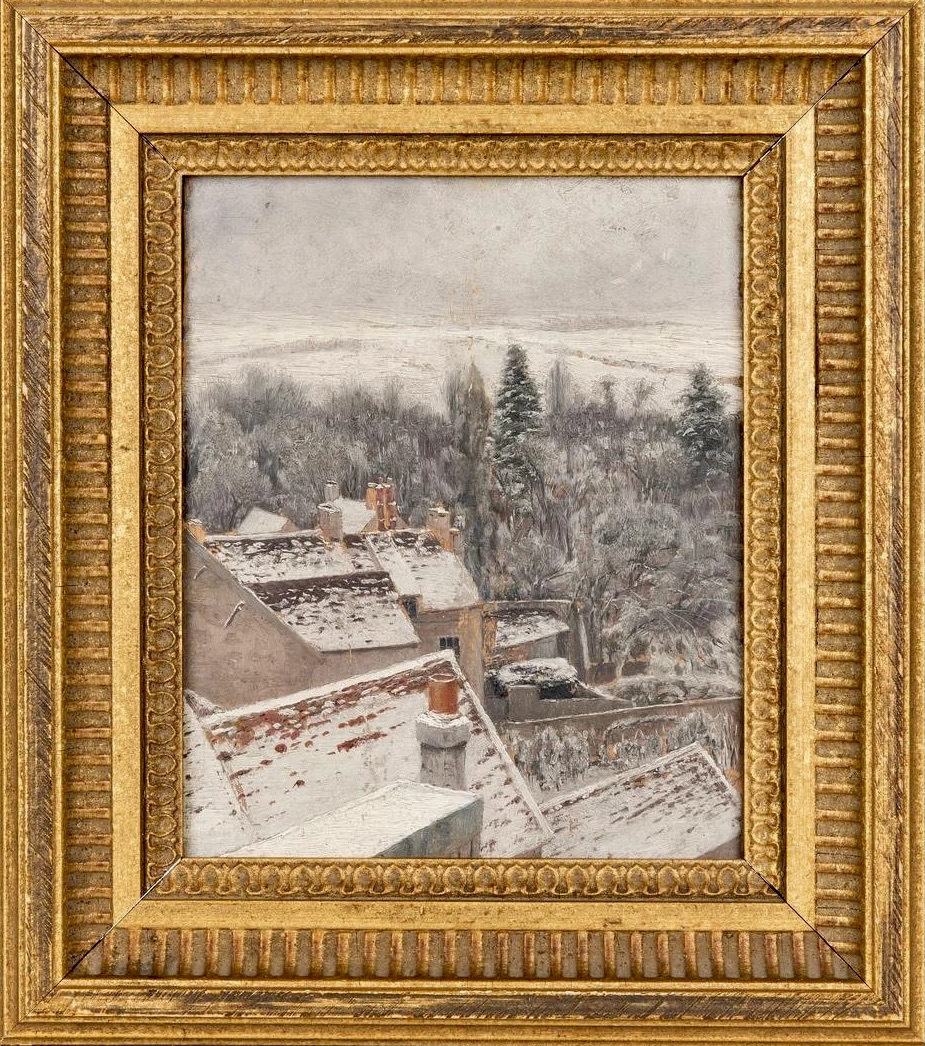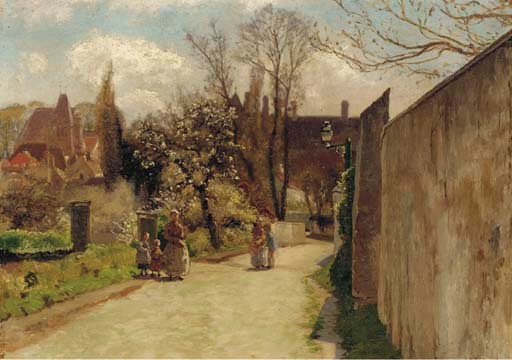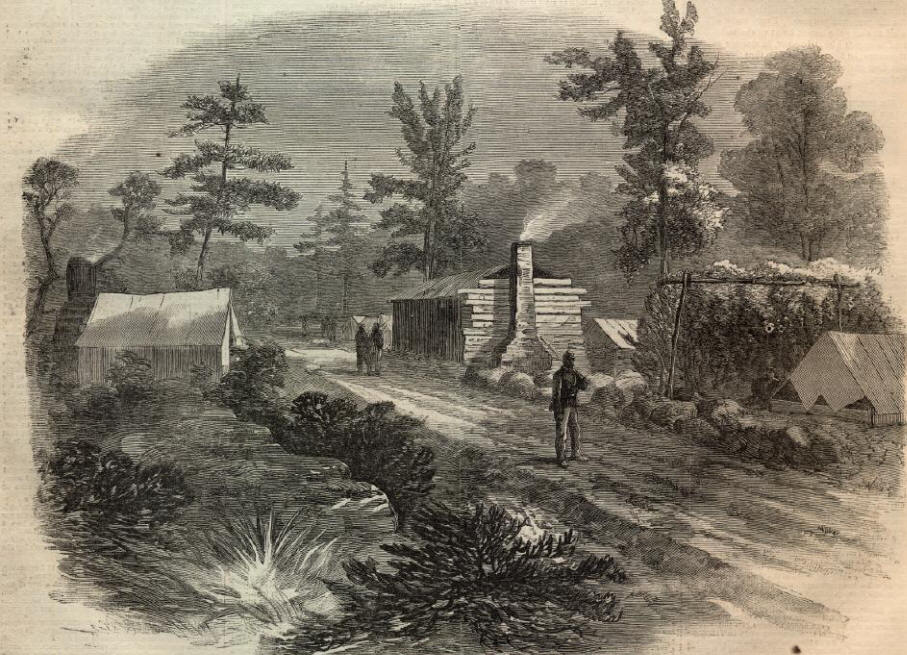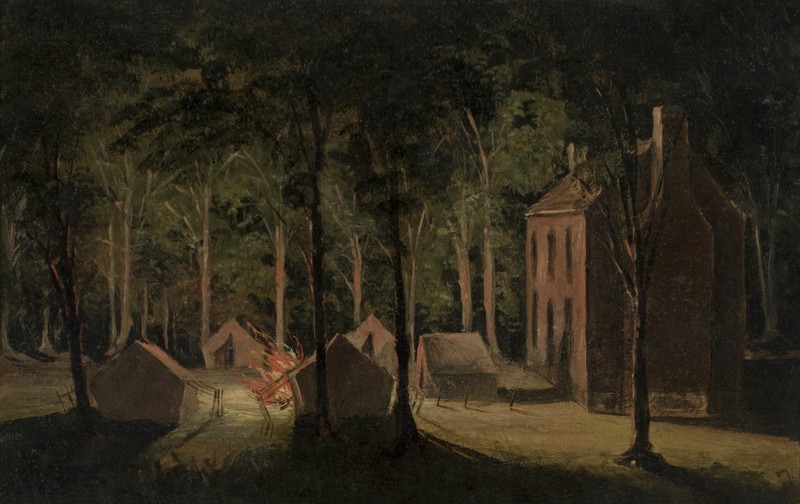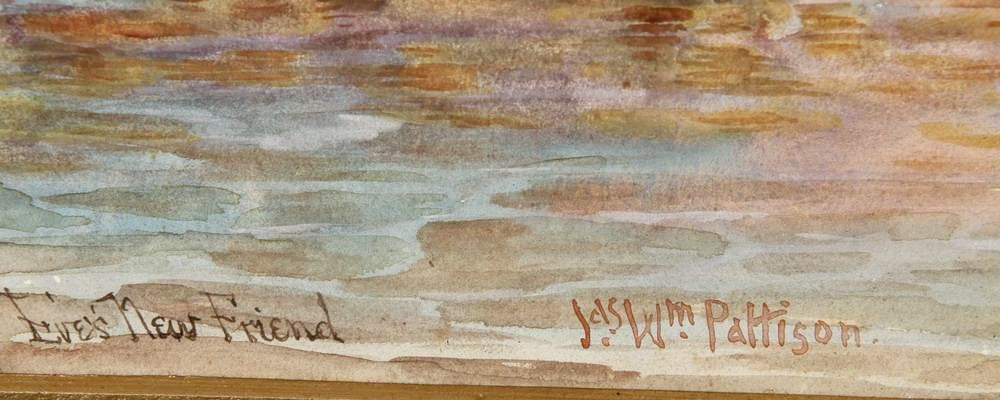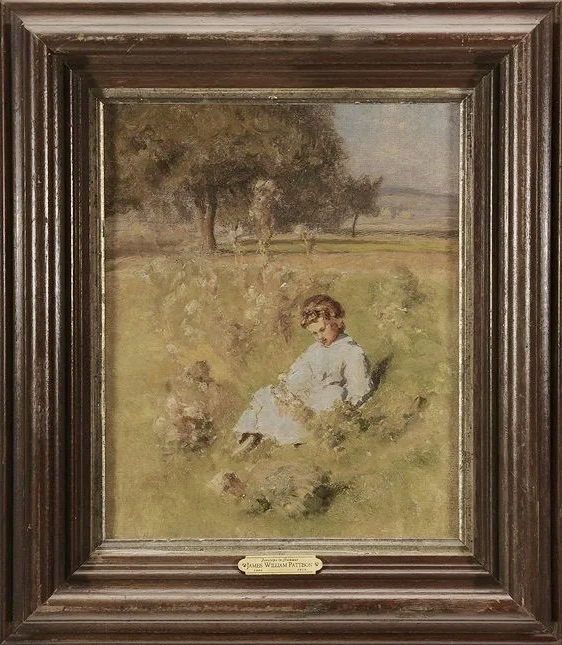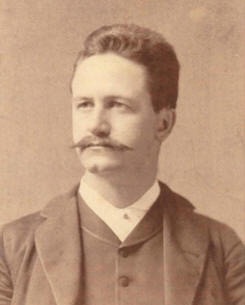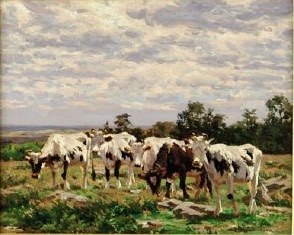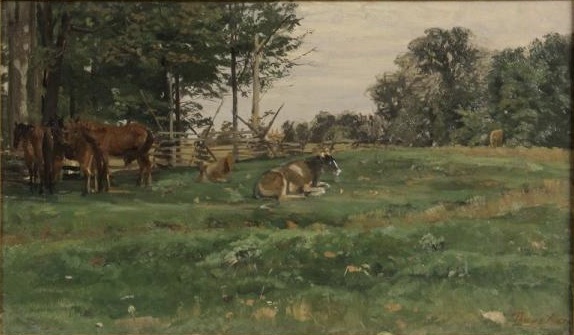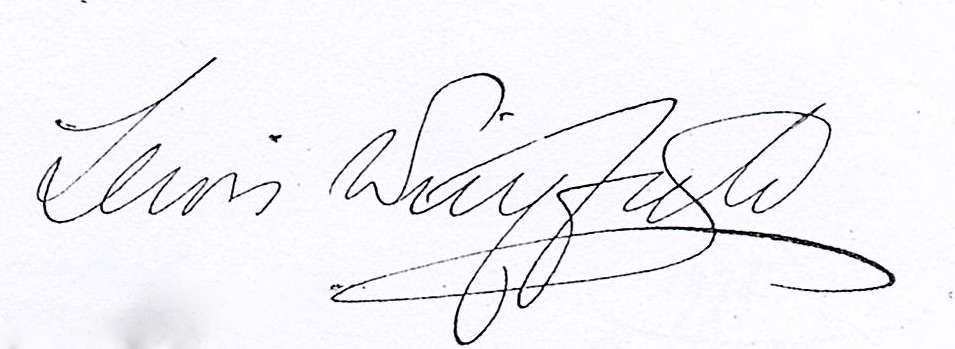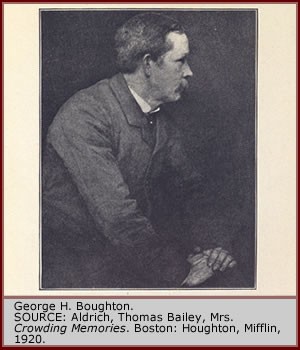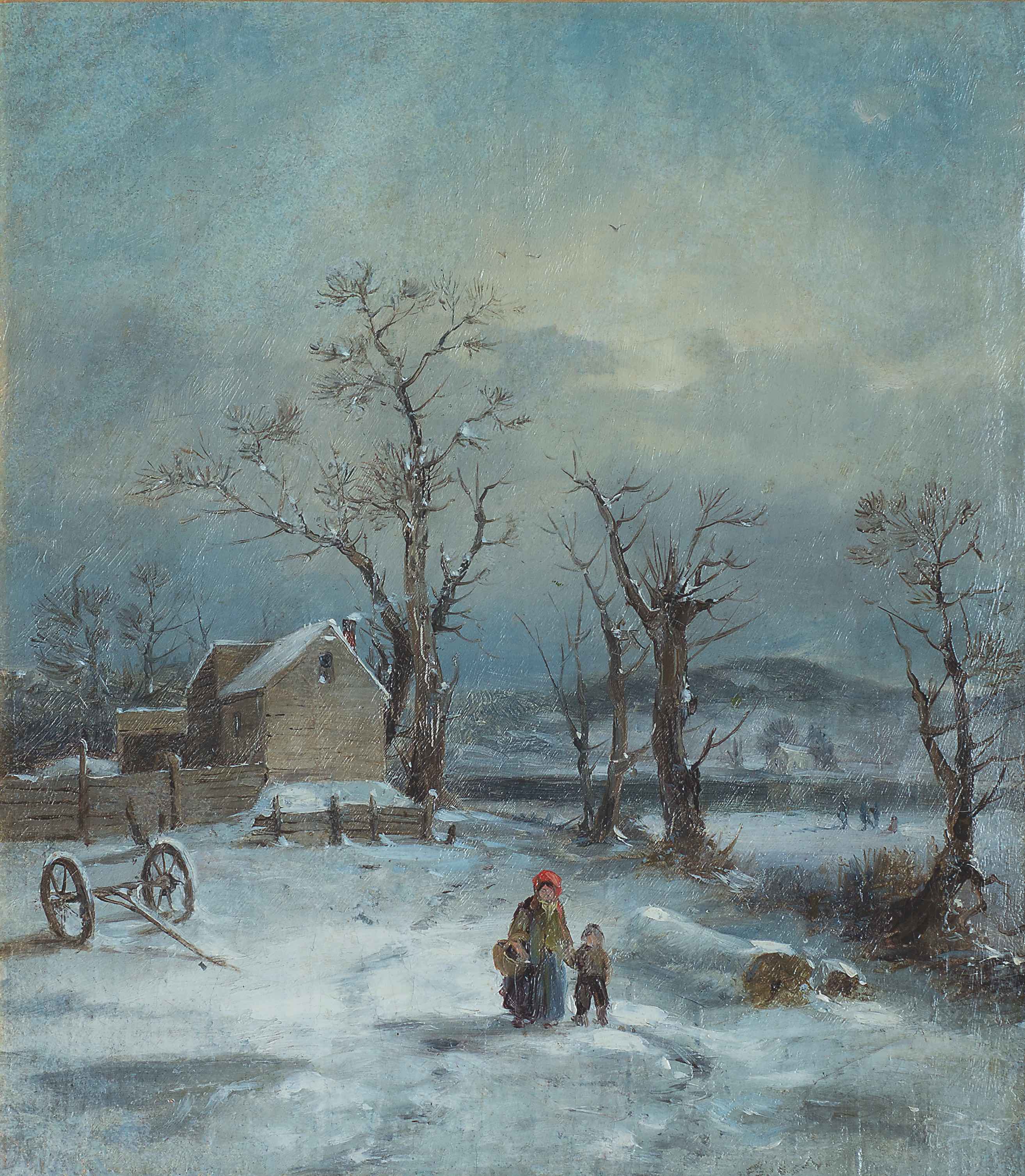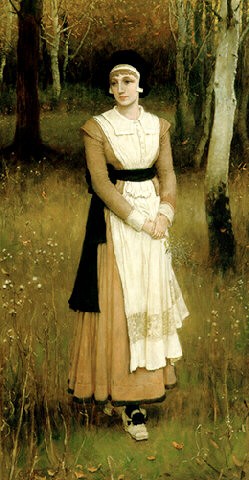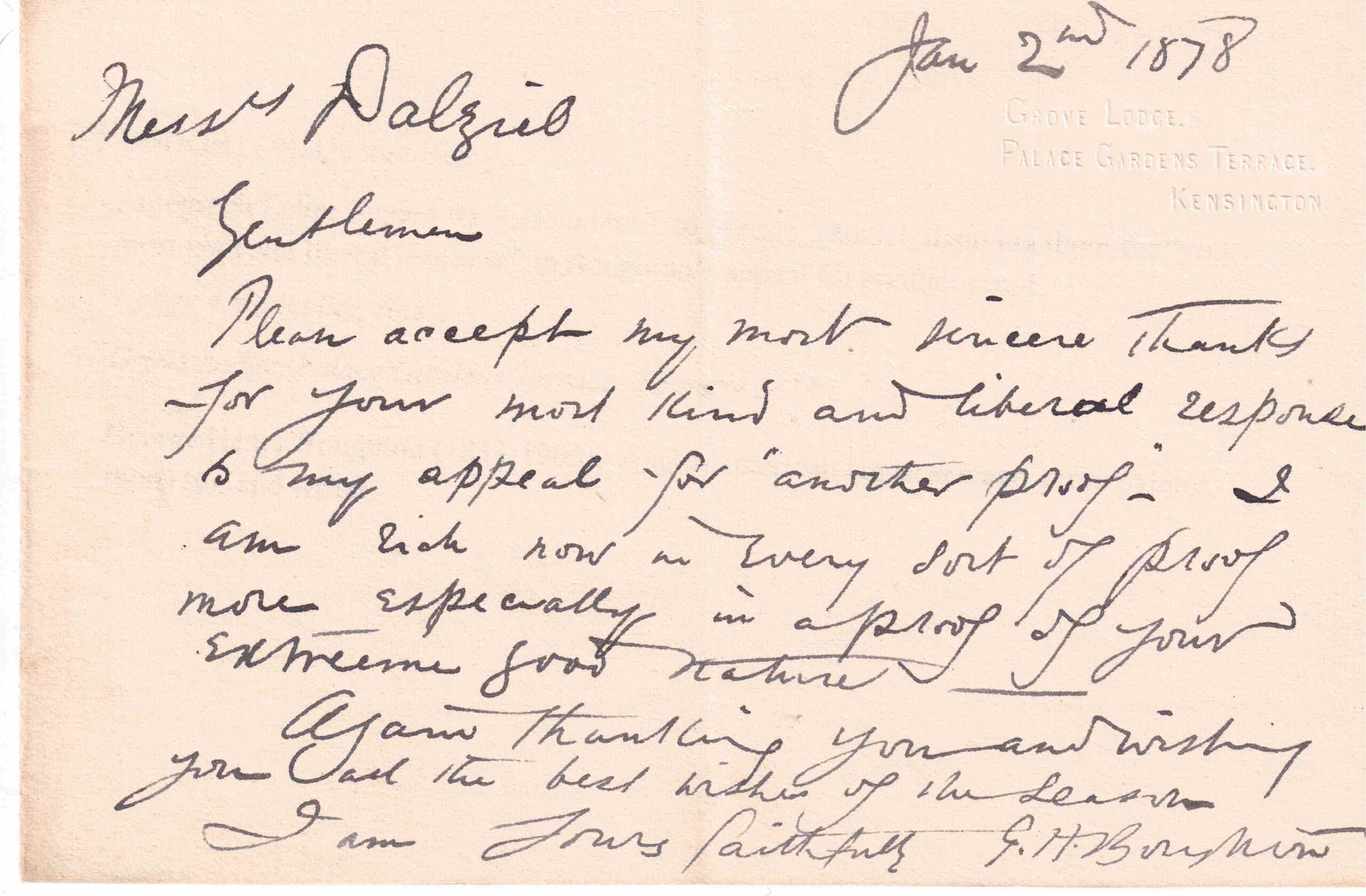James Crawford Thom E
New York City, March 22nd 1835 – February 16th 1898, Atlantic Highlands, NJ.
James Crawford Thom was born on March 22, 1835, in New York City, the son of James Thom (1802-1850), a sculptor, and Jessie Thom (died 1868).
James married Louise Giles (died in 1881). They had a son named Salvatore Thom, born in France in 1865. They then had Ada (born in 1866), James (1867-1946), Blanche and Jessie, all four born in England. It is interesting to mention that Ada married Frank Hoffman, from New Jersey. They had four sons, one named Harold G. Hoffman, the future Governor of New Jersey. He became known as « the most corrupt Governor New Jersey has ever had.
James Crawford Thom studied at the Perth Amboy Artists Colony and then, in 1853, at the National Academy. He came to France with Corot and stayed at Ecouen at 13 rue de Paris. In the 1861 census, he is listed as Croquefort (misunderstood by Crawford). His paintings of children playing in the snow show the great influence of Pierre Edouard Frère. One of his paintings is titled « Study at Ecouen« . The style of genre painting is clearly visible in « Feeding the ducks » and « Circus scene« .
After the death of Louise Giles, James Crawford Thom remarried in 1884 to Sarah Bloodgood, the daughter of a horse-drawn carriage manufacturer.
From 1884 until his death, James Crawford Thom lived in Old Bridge, NJ. He died of pneumonia in Atlantic Highlands, NJ. He is buried in the family plot in Old Bridge Cemetery.
For further information, please read the book “L’Ecole d’Ecouen, une colonie de peintres au XIXe siècle” (bilingual French-English).
